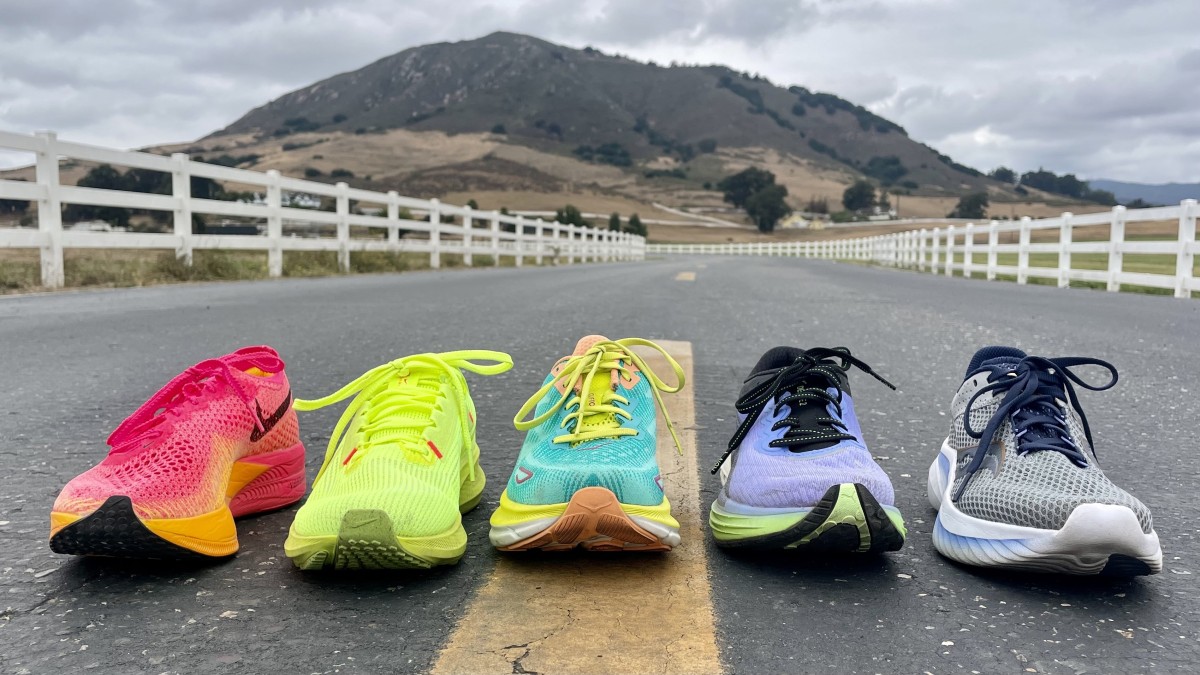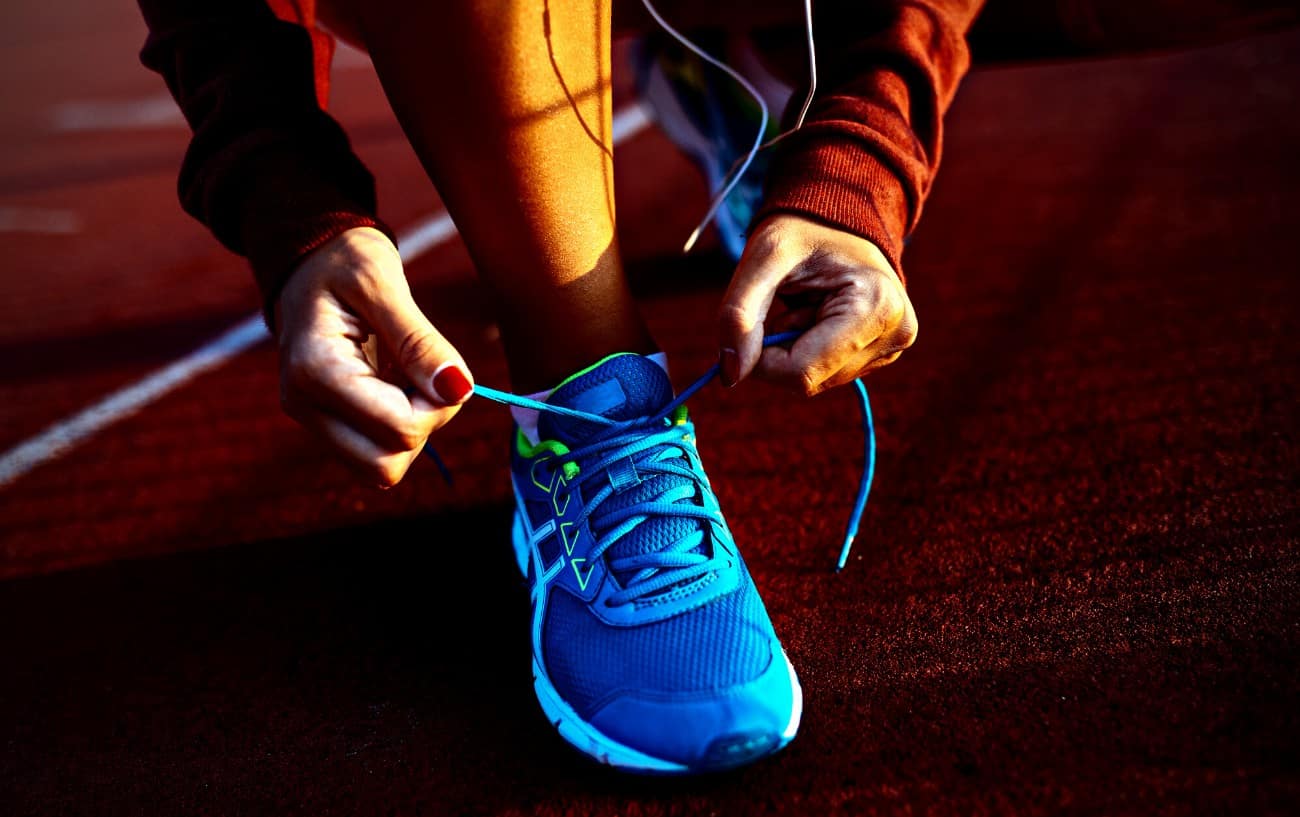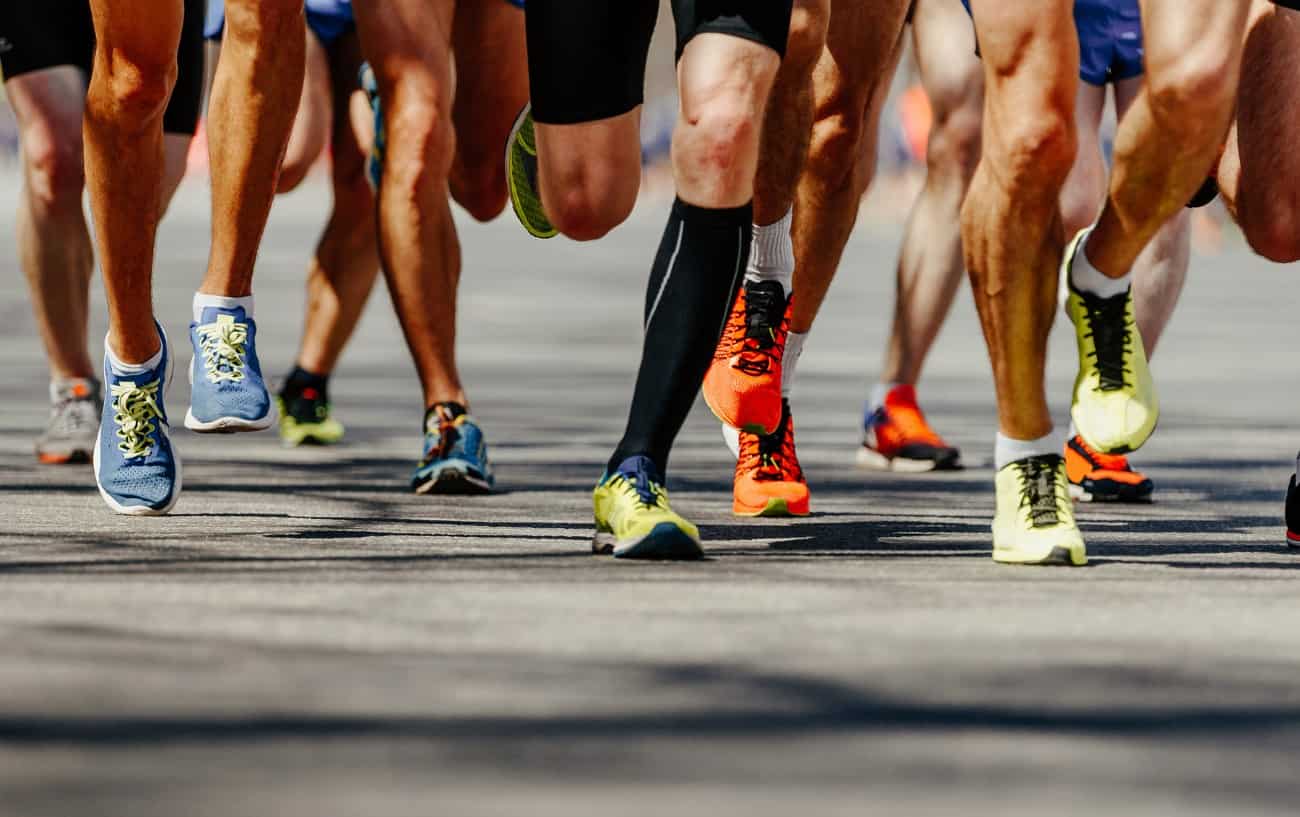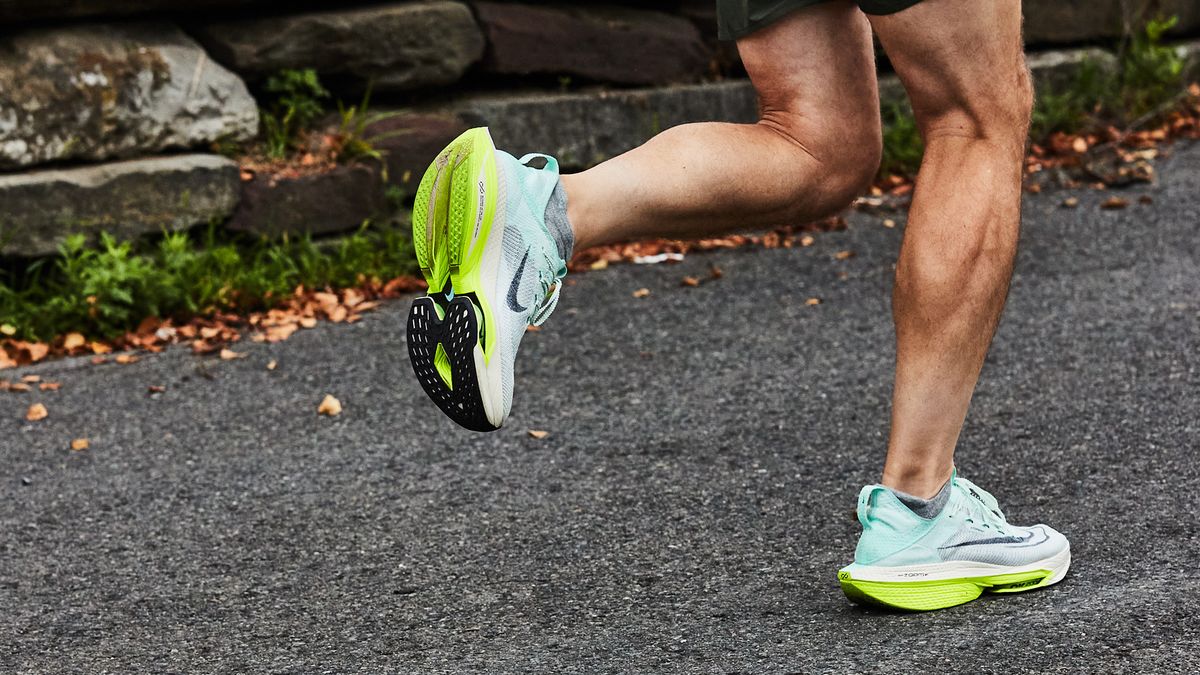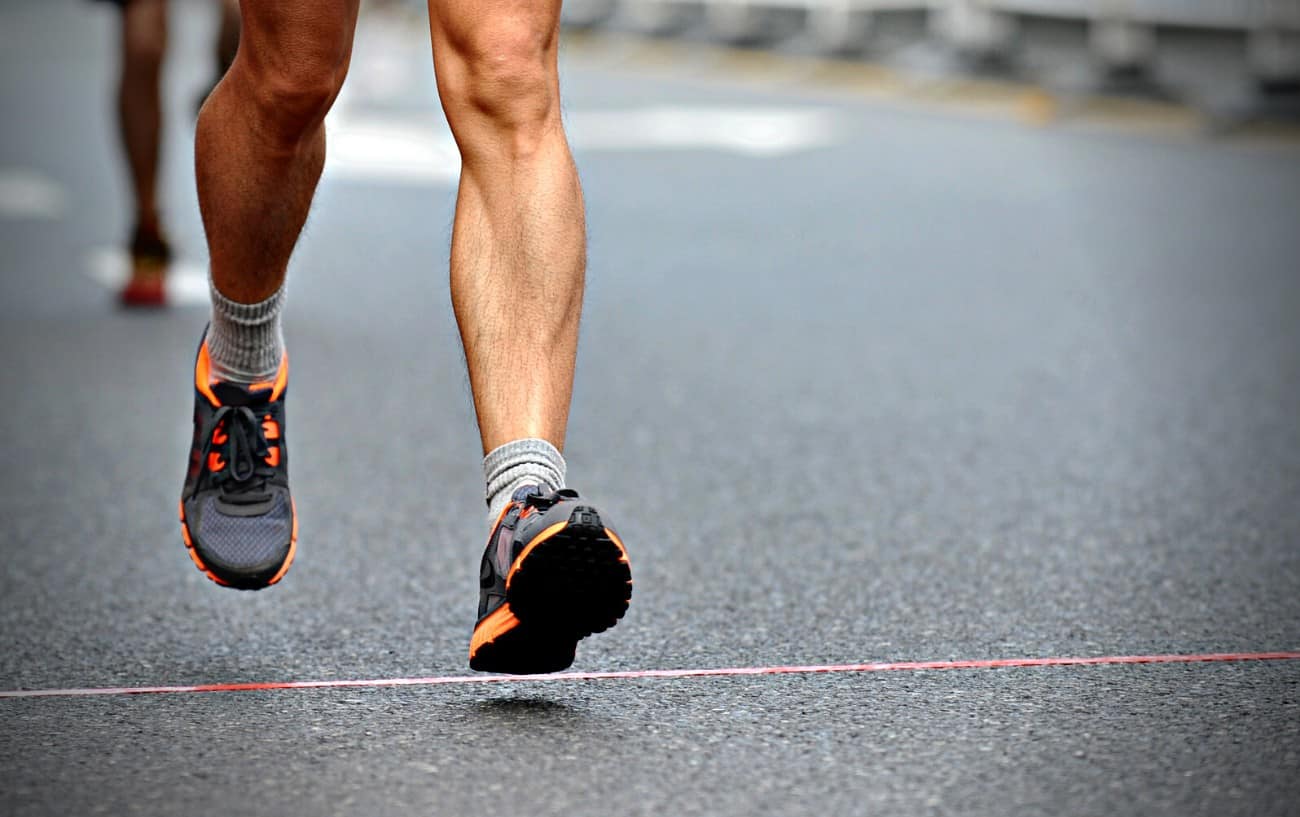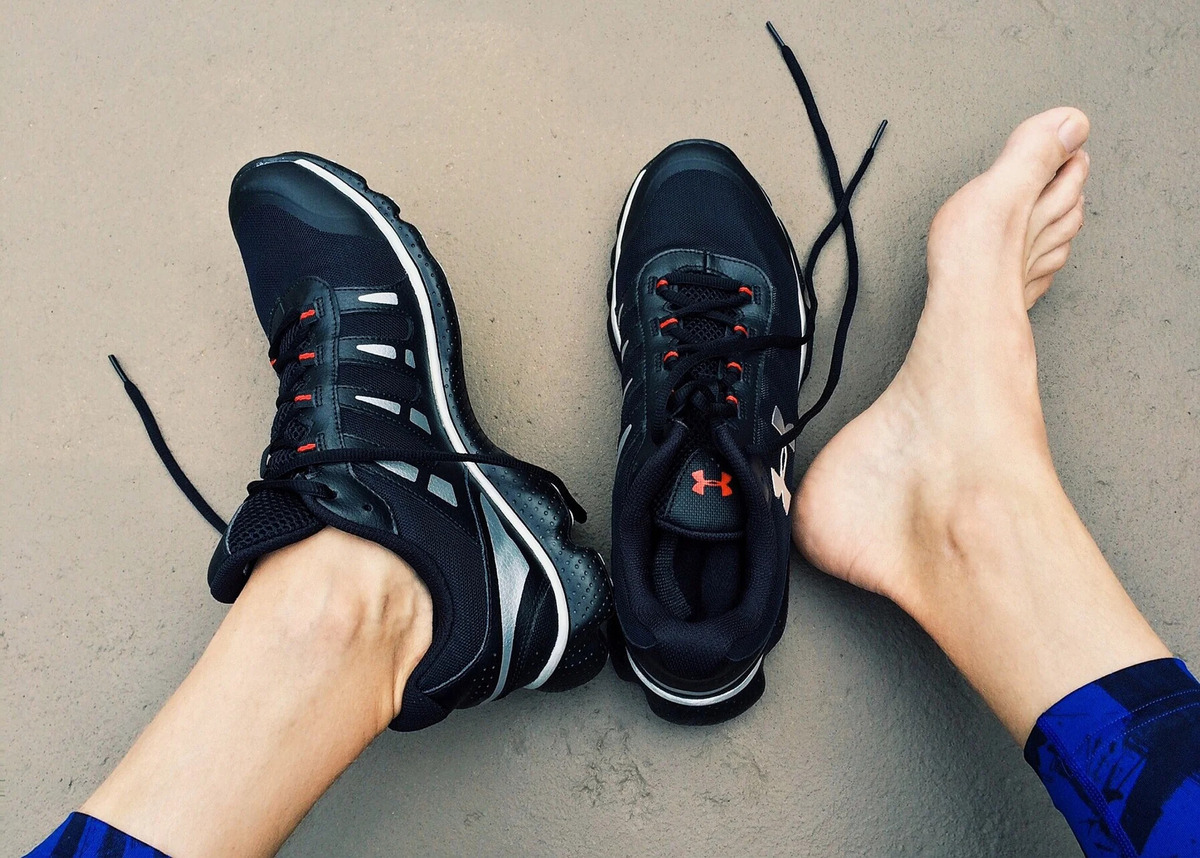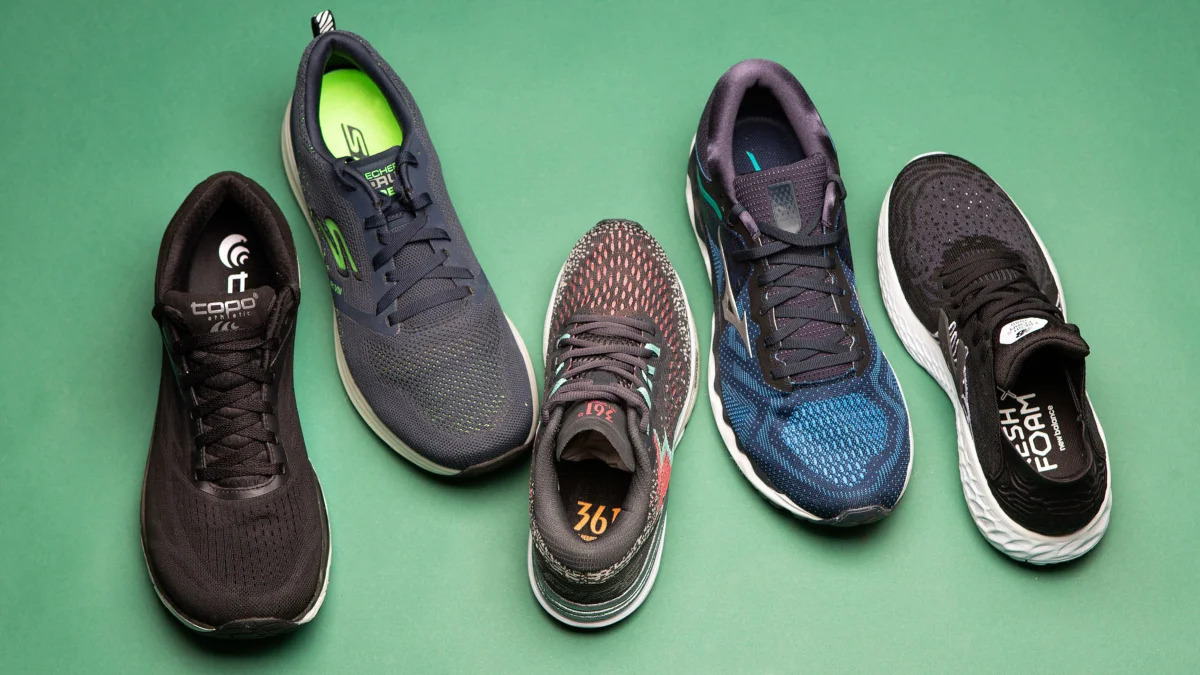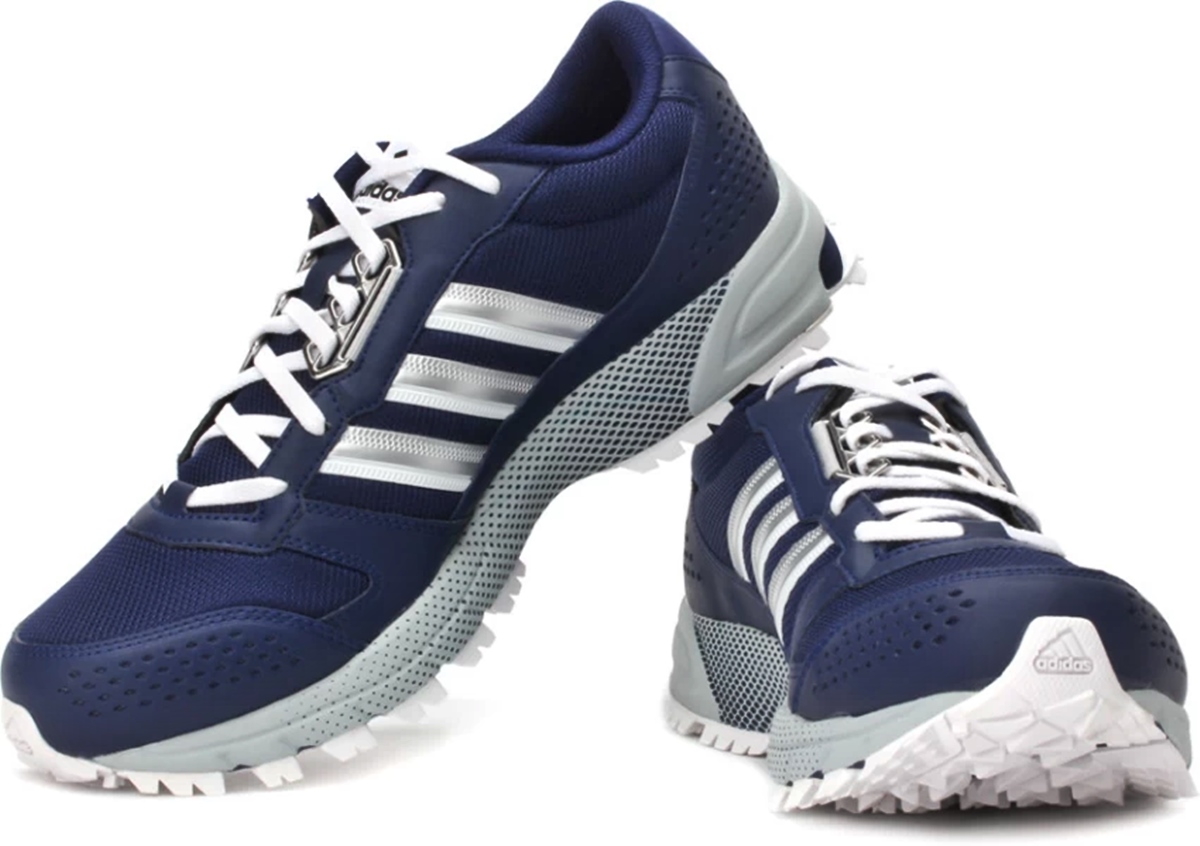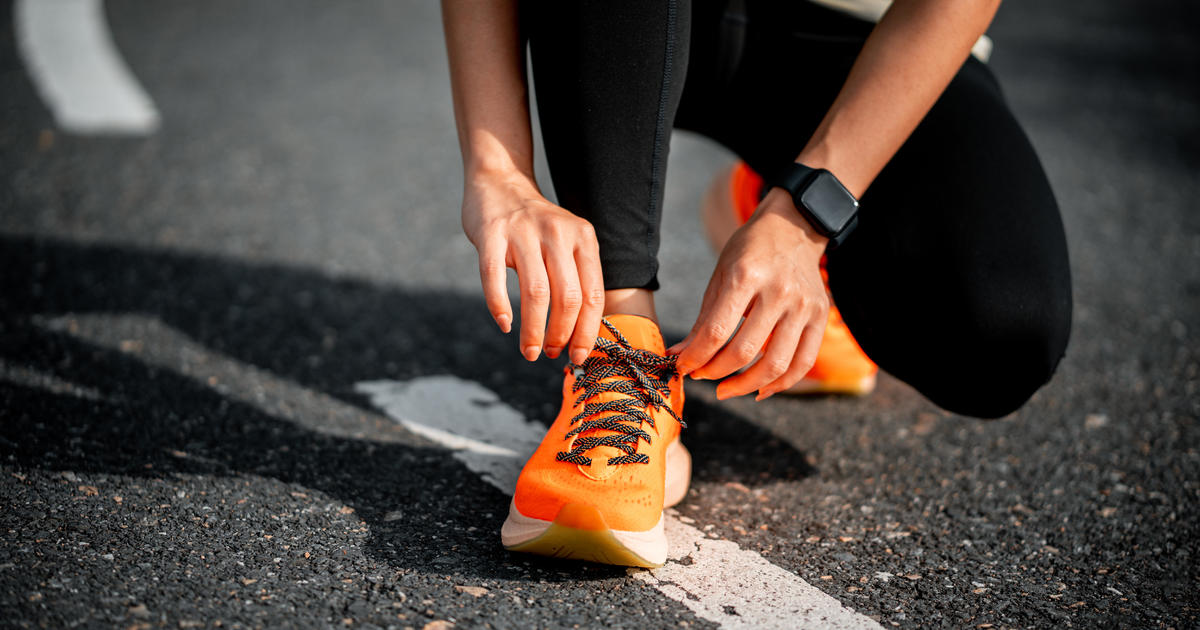

Featured
How To Lace Running Shoes For Flat Feet
Modified: January 1, 2024
Learn how to lace running shoes properly for flat feet with our featured guide. Find the best techniques and improve your comfort and performance.
Introduction
Welcome to our comprehensive guide on how to lace running shoes for flat feet. If you are an avid runner with flat feet, you may have experienced discomfort or pain during your runs. Flat feet, also known as fallen arches, occur when the arches of your feet do not develop properly or collapse. This can lead to overpronation, ankle instability, and various foot-related issues.
Proper shoe lacing techniques can play a vital role in providing support, stability, and comfort for runners with flat feet. By utilizing the right lacing technique, you can help alleviate some of the stress and strain placed on the arches and prevent common running injuries.
In this guide, we will explore different types of lacing techniques specifically designed for flat feet and provide a detailed step-by-step guide on how to lace running shoes to optimize comfort and stability. Additionally, we will highlight common mistakes to avoid and offer additional tips for runners with flat feet.
Whether you are a seasoned runner or just starting your running journey, this guide will help you understand the importance of proper shoe lacing and provide practical tips to enhance your running experience.
Understanding Flat Feet
Flat feet, also known as fallen arches, is a common condition where the arches of the feet are significantly reduced or nonexistent. This can result in the entire sole of the foot, from heel to toe, coming into contact with the ground during weight-bearing activities such as walking or running.
Flat feet can be inherited or developed over time due to factors such as injury, muscle weakness, or excessive stress on the feet. While some individuals with flat feet may not experience any discomfort or limitations, others may suffer from a variety of symptoms, including:
- Foot and ankle pain
- Aching or fatigue in the feet and legs
- Overpronation (the foot rolling inward excessively)
- Shin splints
- Plantar fasciitis
- Arch and heel pain
It is important to note that having flat feet does not necessarily mean you cannot participate in physical activities such as running. With the right shoes and proper lacing techniques, individuals with flat feet can enjoy running without discomfort or pain.
If you suspect you have flat feet, it is recommended to consult with a healthcare professional, such as a podiatrist or orthopedic specialist, who can evaluate your feet and provide appropriate guidance. They can determine the severity of your condition and recommend specific treatment options, including shoe modifications, orthotic inserts, or exercises to strengthen the muscles in your feet and ankles.
Understanding the unique characteristics of flat feet is crucial in selecting the right shoes and adopting suitable lacing techniques to provide the necessary support and stability during running or other physical activities. Next, we will discuss the importance of proper shoe lacing for individuals with flat feet.
Importance of Proper Shoe Lacing
Proper shoe lacing is essential for individuals with flat feet as it can significantly impact their comfort, foot stability, and overall running performance. Here are some key reasons why proper shoe lacing is important:
1. Enhanced Support
By using the correct lacing technique, you can provide additional support to your feet and help compensate for the lack of natural arch support. This can help alleviate the stress placed on the arches, reducing the chances of discomfort or pain during your runs.
2. Improved Stability
Flat feet tend to cause overpronation, which can lead to ankle instability and increased risk of injuries. Properly lacing your shoes can help control and limit the inward rolling of the foot, promoting better biomechanics and stability.
3. Prevention of Hotspots and Blisters
Improperly laced shoes can create pressure points and friction, resulting in painful hotspots and blisters. By using appropriate lacing techniques, you can distribute pressure evenly across the shoe and reduce the chances of these discomforts.
4. Customized Fit
Everyone’s feet are unique, and finding the right fit is crucial for optimal comfort and performance. Through different lacing techniques, you can adjust the tightness and looseness in specific areas of the shoe to accommodate the shape and needs of your feet.
5. Confidence and Focus
Running with shoes that fit well and provide proper support can boost your confidence and allow you to focus on your performance rather than discomfort or pain. When your feet are well-supported, you can run with greater ease and enjoy your training sessions to the fullest.
By understanding the importance of proper shoe lacing, you can maximize the benefits of your running shoes and mitigate potential issues associated with flat feet. In the next section, we will explore different types of shoe lacing techniques specifically designed for individuals with flat feet.
Types of Shoe Lacing Techniques
When it comes to lacing running shoes for flat feet, there are several techniques you can try to improve the fit and support provided by your shoes. Here are some common lacing techniques that are particularly beneficial for individuals with flat feet:
1. Runner’s Loop Technique
The Runner’s Loop technique helps to alleviate pressure on the top of the foot and provides additional support around the arch. Start by creating a small loop on each side of the shoe’s laces near the top. Then, thread the laces through those loops before securing them as usual.
2. Wide Toe Box Lacing
This technique is especially useful for those with wide feet or flat feet as it allows for more room in the toe box. Start by skipping one or two eyelets near the toes and cross the laces over the next higher eyelets. Continue this pattern until you reach the top of the shoe.
3. Lock Lacing Technique
Lock lacing is an excellent technique for those who experience heel slippage or need extra stability in the heel area. After lacing the shoes as usual, create a loop with each lace and cross them over. Thread each lace end through the loop on the opposite side and pull them tight to create a secure lock.
4. X-Lacing Technique
The X-lacing technique helps to alleviate pressure on the instep and provides a more secure fit. Start by crossing the laces over at the bottom eyelets, then feed them through the next higher eyelets, creating an “X” shape on the top of the shoe. Continue lacing in an alternating pattern until you reach the top.
5. Parallel Lacing Technique
The parallel lacing technique is useful for those who need extra width or have sensitive areas on the top of the foot. Lace the shoes as usual until you reach the area where you require more width. Instead of crossing the laces, thread them through the eyelets on the same side in a parallel manner.
These are just a few examples of the many lacing techniques you can experiment with to find the one that works best for your flat feet. Keep in mind that everyone’s feet are unique, so don’t hesitate to try different techniques and make adjustments until you find the most comfortable and supportive fit. In the next section, we will guide you through a step-by-step process on how to lace your running shoes for flat feet.
Choosing the Right Lacing Technique for Flat Feet
With a variety of lacing techniques available, it’s important to choose the right one that addresses the specific needs and challenges of your flat feet. Consider the following factors when selecting the appropriate lacing technique:
1. Arch Support
Flat feet lack the natural arch support that helps distribute weight evenly throughout the foot. Look for lacing techniques that provide additional support and stability to the arch area, such as the Runner’s Loop or X-Lacing technique.
2. Foot Width
If you have wider feet or experience discomfort due to pressure points, consider lacing techniques that allow for more space in the toe box or offer width adjustments, such as the Wide Toe Box or Parallel Lacing technique.
3. Heel Stability
Flat feet can lead to overpronation and heel slippage, making heel stability crucial during running. Choose lacing techniques such as the Lock Lacing technique to provide a secure fit and prevent excess movement in the heel area.
4. Instep Pressure
If you experience pressure or discomfort on the top of your foot, lacing techniques like the X-Lacing or Parallel Lacing technique can help alleviate such issues by distributing pressure more evenly across the foot.
5. Personal Preference
Ultimately, the best lacing technique for your flat feet is the one that feels most comfortable and supportive to you. Experiment with different techniques, make adjustments, and trust your own judgment to find the lacing technique that works best for you.
Remember that each individual’s feet and preferences are unique, so don’t be discouraged if it takes some trial and error to find the perfect lacing technique. Keep in mind that the right lacing method can make a significant difference in your running experience, providing the comfort, stability, and support needed for optimal performance.
Now that you have a better understanding of how to choose the right lacing technique, let’s move on to the practical aspect and explore a step-by-step guide on how to lace your running shoes for flat feet.
Step-by-Step Guide: How to Lace Running Shoes for Flat Feet
Properly lacing your running shoes is crucial for individuals with flat feet. Follow these step-by-step instructions to ensure a comfortable and supportive fit:
Step 1: Choose the Right Lacing Technique
Based on your specific needs, select the lacing technique that best addresses your flat feet. Consider factors like arch support, foot width, heel stability, and instep pressure when making your decision.
Step 2: Unlace the Shoes
Start by removing the existing laces from your running shoes. This will provide a clean slate for lacing them in the desired technique.
Step 3: Prepare the Shoes
Ensure your running shoes are properly fitted and adjusted to your feet. Loosen the laces and open the tongue of the shoe to make it easier to slide your foot in later.
Step 4: Begin Lacing
Start lacing your shoes using your chosen lacing technique. Follow the specific instructions for that technique, paying attention to any adjustments or modifications required for flat feet.
Step 5: Adjust Tightness
As you lace up your shoes, adjust the tightness to achieve a snug fit that provides support and stability without being too tight or uncomfortable. Pay extra attention to the areas that need specific support, such as the arch or heel.
Step 6: Check for Comfort
After lacing up your shoes, ensure they feel comfortable and secure. Walk around and flex your feet to test the fit. Make any necessary adjustments to the tightness or lacing technique until you achieve the desired level of comfort and support.
Step 7: Tie the Laces
Once you are satisfied with the fit, tie your laces in your preferred knot or bow. Make sure they are securely tied to prevent any loosening or discomfort during your run.
Remember, it may take some time to find the perfect lacing technique and fit for your flat feet. Don’t hesitate to experiment and make adjustments until you find what works best for you. Your comfort and foot support are crucial for an enjoyable and pain-free running experience.
In the next section, we will discuss common mistakes to avoid when lacing your running shoes for flat feet.
Common Mistakes to Avoid
When lacing your running shoes for flat feet, it’s important to be aware of common mistakes that can affect the fit and support provided by your shoes. By avoiding these mistakes, you can optimize your running experience and prevent discomfort or injuries. Here are some common lacing mistakes to watch out for:
1. Lacing Too Tight
Lacing your shoes too tightly can restrict blood flow and cause discomfort or numbness. Ensure that your laces are snug, but not overly tight, to maintain proper circulation and prevent unnecessary pressure on your feet.
2. Lacing Unevenly
When lacing your shoes, ensure that the tension is distributed evenly on both sides. Uneven lacing can lead to an imbalanced fit and cause issues such as foot pain or instability.
3. Ignoring Hotspots or Pressure Points
If you notice any hotspots or pressure points on your feet while lacing your shoes, it’s important not to ignore them. Take the time to relace and adjust accordingly to alleviate discomfort and prevent the development of blisters.
4. Skipping Eyelets
Skipping or avoiding eyelets can result in an improper fit and compromised support. It’s essential to utilize all available eyelets, especially in areas where you need additional stability and support, such as the arch or heel.
5. Failing to Reassess Regularly
Feet can change over time, so it’s important to reassess your lacing technique periodically. Periodically check the fit and comfort of your shoes, and make any necessary adjustments to ensure ongoing support and a proper fit.
6. Overlooking Insole Placement
Insoles play a crucial role in providing additional support for flat feet. Ensure that the insoles are properly positioned and secured within your shoes to maximize their benefits and enhance your overall foot support.
By being mindful of these common mistakes, you can lace your running shoes for flat feet correctly and avoid potential discomfort or injuries. With the right technique and attention to detail, you can optimize the fit, support, and overall experience of your running shoes.
Next, we will provide additional tips specifically tailored for runners with flat feet to further enhance their running performance and comfort.
Additional Tips for Runners with Flat Feet
For runners with flat feet, proper shoe lacing is just one aspect of ensuring optimal comfort and performance. Here are some additional tips to consider:
1. Choose the Right Shoes
Select running shoes that are specifically designed for flat feet, offering features such as arch support, stability, and motion control. Consult with a footwear specialist or a podiatrist to find the best shoes for your specific needs.
2. Incorporate Orthotic Inserts
Consider using orthotic inserts or custom-made orthotics to provide additional support and help correct any imbalances or overpronation caused by flat feet. These inserts can enhance comfort and reduce the risk of injuries.
3. Strengthen Your Feet and Ankles
Incorporate exercises that strengthen the muscles in your feet and ankles. This can help improve stability, reduce overpronation, and enhance overall foot function. Toe curls, calf raises, and ankle rolls are some exercises to consider.
4. Listen to Your Body
Pay attention to any discomfort, pain, or fatigue in your feet and legs. If you experience persistent or worsening symptoms, it’s important to consult with a medical professional for an evaluation and guidance.
5. Replace Shoes Regularly
Running shoes lose their cushioning and support over time. Replace your shoes regularly, typically every 300-500 miles or when you notice significant wear and tear. Fresh shoes provide better support and reduce the risk of injuries.
6. Gradual Transition in Shoe Modifications
If you decide to make adjustments to your lacing technique or add insoles or orthotics, make these changes gradually. Sudden modifications can cause discomfort or create new issues. Gradually introduce the changes to allow your feet to adjust.
7. Get Professional Advice
If you’re having ongoing issues or have concerns about your flat feet, seek advice from a podiatrist or orthopedic specialist. They can provide a thorough assessment, offer personalized recommendations, and help you find the best strategies for managing your condition as a runner.
By implementing these additional tips, you can further enhance your running experience, improve your foot support, and reduce the risk of discomfort or injuries associated with flat feet. Remember, every individual is unique, and finding what works best for you may require some experimentation and professional guidance.
Now that you have all the tools and knowledge necessary to lace your running shoes, avoid common mistakes, and optimize your comfort and performance, it’s time to hit the road with confidence!
Conclusion
Congratulations! You are now equipped with valuable knowledge on how to lace running shoes for flat feet. Proper shoe lacing techniques are essential for individuals with flat feet to enhance comfort, support, and stability during their runs.
Throughout this guide, we explored the importance of proper shoe lacing, different types of lacing techniques suitable for flat feet, and a step-by-step guide on how to lace your running shoes. We also discussed common mistakes to avoid and provided additional tips for runners with flat feet.
Remember, everyone’s feet are unique, and finding the ideal lacing technique may require some trial and error. It’s essential to listen to your body, be mindful of any discomfort or pain, and make adjustments accordingly. Consulting with a healthcare professional, such as a podiatrist, can provide personalized guidance based on your specific needs.
By incorporating the correct lacing technique for your flat feet, along with choosing the right shoes and considering additional factors like orthotic inserts and foot exercises, you can maximize your running experience. Prioritize comfort, stability, and foot support to reduce the risk of injuries and enjoy your runs to the fullest.
Now, it’s time to lace up, hit the pavement, and embark on your running journey with confidence and comfort!
